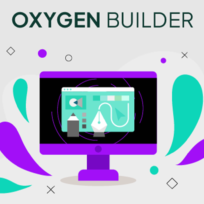
Whether you own a restaurant, local shop, or any other type of small or medium business, a good website is essential for you. It presents your products or services and lets customers connect with you on-line. But what are the steps you have to take in order to build a good Small or Medium Business website or ecommerce shop? We decided to share our experience and tell you about the whole process.
When building a website, you have to consider many factors. At the beginning, you may be confused by the number of choices you should make: searching for hosting, choosing a domain and finding out what content management system is. The good news is that all of it is not THAT hard – you just need an experienced guide. That’s why we will lead you, step by step, through the basic elements of creating a great website for small and medium business.
1. Get a Domain for your Website
First step on your way is choosing a Domain name. A domain is a signpost of your business and important SEO factor that helps rank higher in Google search results. In short – it is one of the first things that your clients notice in contact with your website.
A good domain should be:
- Easy to understand and write down (especially in times when we pass information quickly).
- Easy to pronounce (you don’t want anyone to misspell and confuse it with other services),
- Easy to remember (if it sticks to the mind it will be easier to spread).
To make your website memorable and easy to find on the web, we recommend avoiding complicated words, double letters and punctuation marks.
Now, pick the right extension to your domain. Among others, you can choose from those:
- taken from the country code (.us, .ie),
- generic (.com, .net, .org),
- restricted for the government (.gov, .eu), and many others.
An important factor while making this decision is whether you want to position your website locally, nationally or globally.
For example, to make your website rank higher in New York City, choose an extension .nyc, in the whole USA – .us, and if in the whole world .com.
Now it’s high time for picking hosting services.
2. Buy a Website Hosting Service
Hosting is a service which allows you to have space on a server for your website and any associated files and services such as email. Most hosting packages often include services such as free domain name (just check availability of your dream one), SSL certificate, 24/7 support, email just to name a few.
What is important while choosing web hosting?
First, you check the PHP version – it should be version 7 or greater and MySQL that should be version 5.6 or greater. Another crucial thing is HTTPS support which means the installation of the SSL certificate service on your site.
WordPress.org recommends website hosting providers are:
- Bluehost,
- DreamHost
- SiteGround
- WP Engine
3. Choose Content Management System
Content Management System is a platform which lets you manage your website. In CMS you add text, images and other elements of your website.
Although there are other platforms, we highly recommend you to start your website with WordPress. You just need to choose between options that got sometimes confused: WordPress.com and WordPress.org
What’s the difference between them?
WordPress.com is a blog service with a hosting service included. It is easy to configure it but you lack control over your website, simply because you are not the owner. WordPress.com is the most suitable for any type of blogs and not complicated websites.
Conversely, WordPress.org is the most famous self-hosted WordPress platform. To use this platform you need to get a domain and hosting. So with WordPress.org, you host the website on your server and this makes you the owner. If you want to have total control over your website, plan a shop or corporate website, choose this one.
Read also: 10 most common WordPress mistakes to avoid
If you build an online shop pick an e-commerce platform
Ecommerce platforms let you add cards with products, payment methods – it powers an online shop. There are a few and which one you choose depends on your budget and needs.
The platform that powers the biggest part of online stores is WooCommerce, the next market share goes to Squarespace Online Stores, after which there is Shopify. To know exactly how to build your shop using WooCommerce, you can check our Ultimate WooCommerce Guide.
4. Web Design and Content Creation for Your Website
To build your website – whether you create an informative one or an online store, you need to plan the visual side. You should decide WHAT you want to say on your website (content), HOW to say it (specific language & tone of voice) and HOW it should look like (design of your website e.g., colours, shape of buttons, etc.). Even if you want your website made simple on a ready template available in WordPress you need to think through those things.
Structure of the website
Do you want it to be just a landing page or website with specific subpages? Which information and elements are important to the users and how they may search for them? What should be in your website’s menu? Those are questions you need to respond to. If you get confused, do a little research. Check what other companies from similar industries do.
If you don’t build your website from scratch but use WordPress themes, there are ways to customize it. We talk about it here.
While thinking about your website you should take into account User Experience. Do people know what to click to find a particular piece of information e.g, about your company or to buy a product?
“UX” stands for “user experience.” A user’s experience of the app [or website] is determined by how they interact with it. Is the experience smooth and intuitive or clunky and confusing? Does navigating feel logical or does it feel arbitrary? Does interacting with the app/website give people the sense that they’re efficiently accomplishing the tasks they set out to achieve or does it feel like a struggle? User experience is determined by how easy or difficult it is to interact with the user interface […]”
Quote from UX planet: https://uxplanet.org/what-is-ui-vs-ux-design-and-the-difference-d9113f6612de
Website’s Content – Text and Hierarchy
Simplicity is the key here. The most important thing in website copywriting is that people know what your business is about.
While talking about a text on your website you have to not only consider how to write specific content but also what its hierarchy should be. Which information is crucial? Creating a text for your website should go along with the creation of visual layers. So that you know how much space you have for a particular text.
Design of the Website
It is a moment when the website is growing in body. You choose images, videos, moving elements and highlighted elements. You can use your creativity to make your website modern. If you need consultation for what is impossible to make and what’s not, ask professionals.
While preparing your website, think about the User Interface. UI stands for choosing color schemes and button shapes as well as the width of lines and the fonts used for text. All this to make the website attractive, intuitive and easy to use for users.
Remember that your project has to be mobile-friendly, especially that by September all websites will be moved by Google to Mobile-First Indexing. So that the mobile version will be the most important for Google search.
5. Take care of SEO for Small and Medium Business Website
Digging into detailed strategy regarding technical aspects of SEO demands a specialist. Yet, you may consider elements you can take care by yourself to help it rank higher. At the beginning remember to:
- Make your website load fast
- Check if your website is mobile-friendly (https://search.google.com/test/mobile-friendly)
- Set keywords that you implement in the content of your website
- Secure your website (SSL certificate installed)
- Link different subpages, e.g. blog, offer, etc. so people can surf through different places on your website.
Irena from Insightland prepared more detailed SEO guidelines for developers in articles on our blog divided into part 1 and part 2.
Run your website carefully
The most important steps are behind us. Now, remember to update your website regularly and check its performance. You can use analytics tools such as Google Analytics so you get more detailed data about choices of your clients. Take care of your analytics especially if you run an ecommerce store.
Keep the quality on the back of your head. Carefully prepare each element and go through each step of creating a website and then maintaining it. Everything adds to the way your customers see your business. That is why, if you are not sure about something, don’t be afraid to ask for help from professionals.
See also

Cut2Code Clinches Clutch Global Award
Read article
A Comprehensive Guide to Oxygen: Maximizing Your Web Development Experience.
Read article

